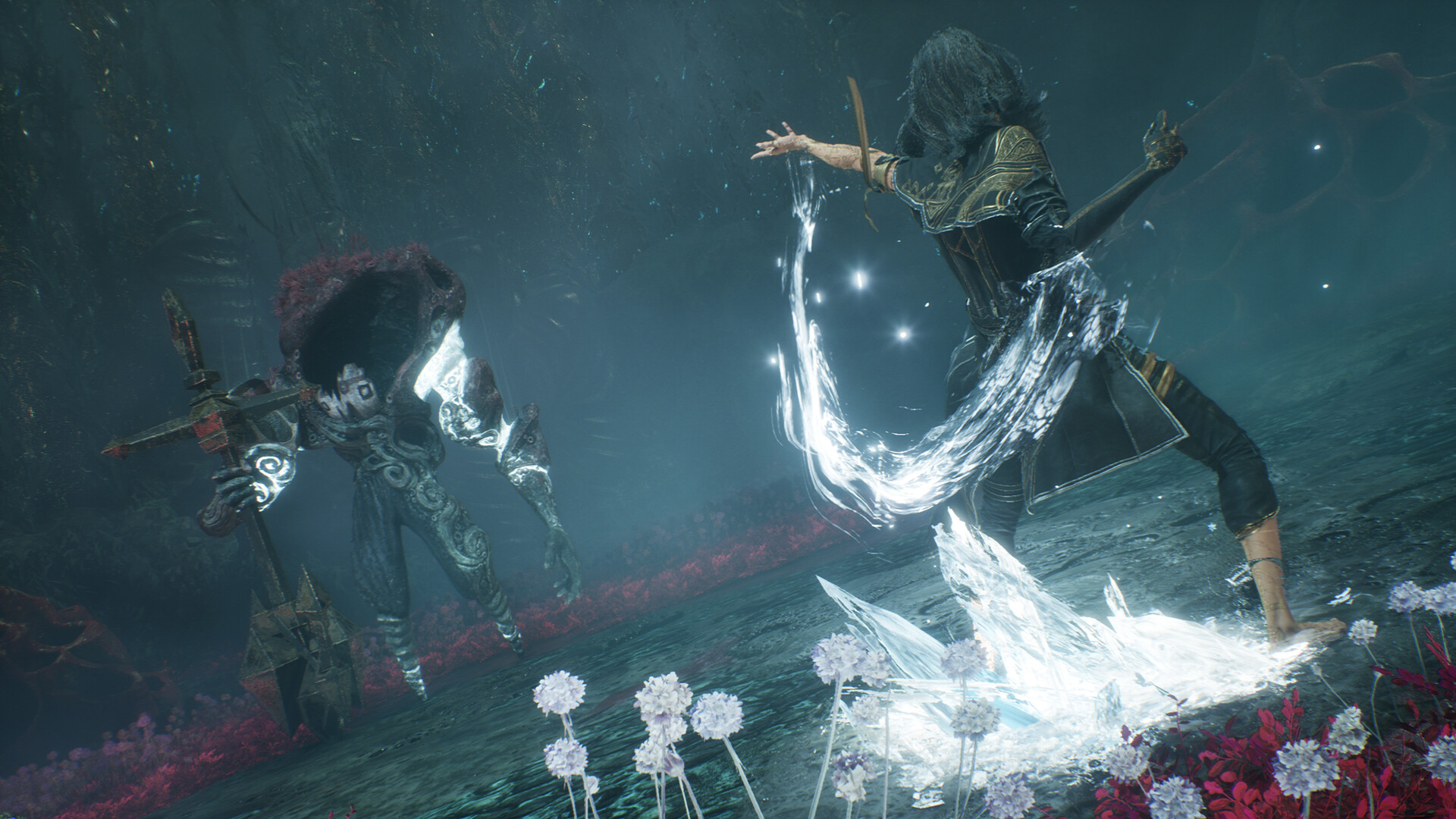Review: Fill the post-apocalyptic void with Wasteland 2: Director's Cut for Xbox One and PC
Wasteland 2: Director's Cut transcends its humble origins to take a seat among the best RPGs available for the Xbox One today.
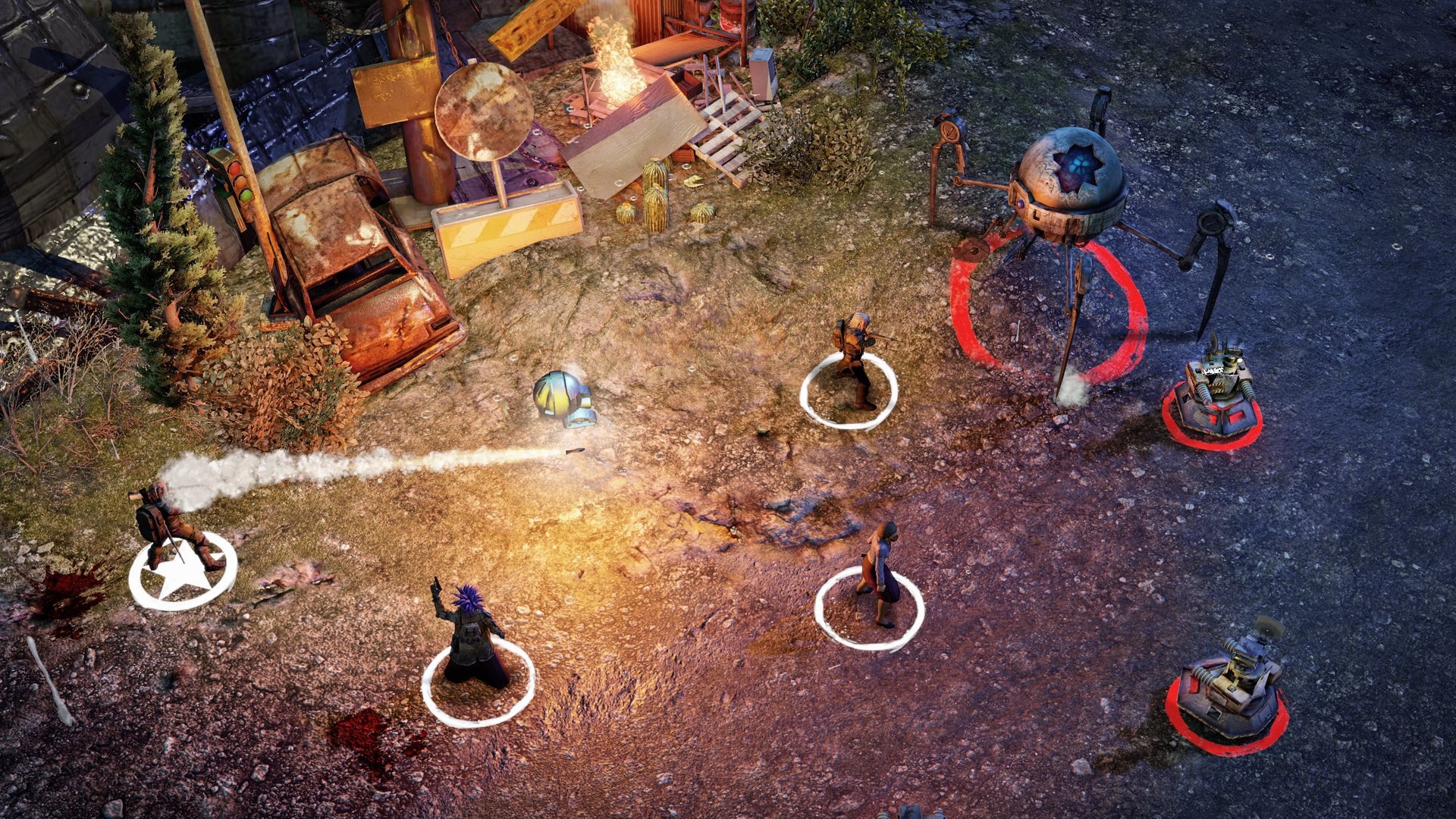

Wasteland 2 is a sequel that took over 25 years to appear, and it couldn't have hit Xbox One at a more opportune time. Wasteland 2 would've launched back in 1997, but at the time, EA held the rights to the Wasteland trademark following the successful publishing of the original. Instead, Wasteland 2 morphed into Fallout, which spawned several sequels, eventually landing in the lap of RPG powerhouse Bethesda.
Interplay Entertainment sold Fallout to Bethesda to avoid bankruptcy, and has since launched several Kickstarter campaigns with varying success. Interplay co-founder Brian Fargo left the studio in the late 90s. Taking his creativity with him, Fargo founded InXile Entertainment and launched one of the most successful Kickstarter campaigns to date - a true sequel to 1988's Wasteland: Wasteland 2.
What is Wasteland 2?
Wasteland 2 is an 3D isometric turn-based tactical RPG, set in a dangerous post-apocalyptic Arizona. You control a party of up to 7 characters, 4 of which you can design yourself, on a mission to solve a mystery that threatens the (somewhat meagre) existence of the surviving populace. As a life-long console gamer, sadly, Wasteland and Interplay's classic Fallout titles completely eluded me. My first foray with Fallout, as is the case for many, was Bethesda's Fallout 3.
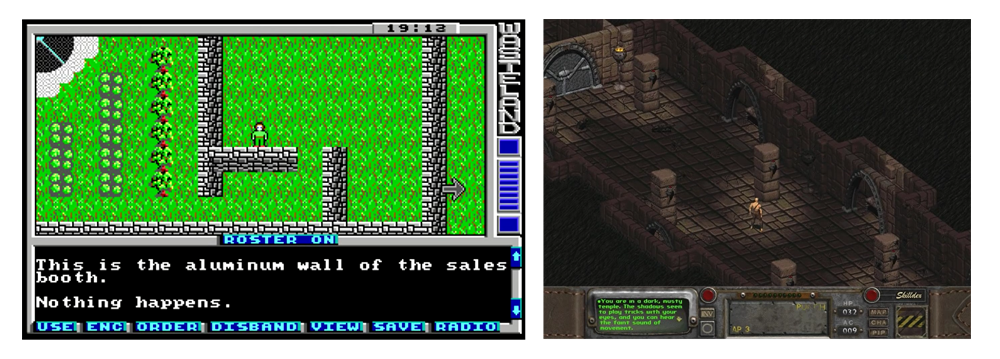
Wasteland pioneered consequential plot decisions that dominate modern Western RPGs, offering a complex choice-driven story that delivers maximum replayability. Post-apocalyptic games like Fallout, State of Decay and S.T.A.L.K.E.R. tap an almost primal survivalist urgency, and Wasteland 2 is no different.
You play as a group of rookie Rangers, Team Echo, who on their first assignment. The Desert Rangers represent a beacon of order and fairness in an otherwise anarchistic land, offering protection to local settlements in exchange for goods and services. The Rangers also act as a rudimentary police force, protecting the innocent from violent raiders and roaming mutants.
Wasteland 2's Kickstarter pledge emphatically states a desire to recapture the original's open-ended nature, with its 'painful' moral choices, challenging tactical gameplay and deep character progression systems. Wasteland 2 launched on PC back in 2014 to some solid acclaim, sitting at 8/10 on Metacritic. There were questions of weapon balance, lack of polish and general hardware optimization, which appear to have impacted the score for some reviewers. InXile opted to address a lot of these concerns with a hefty free update, transforming the game into Wasteland 2: Director's Cut. This is the version that's appeared on Xbox One, complete with updated graphics, tons of bug fixes, balance tweaks and new gameplay features.
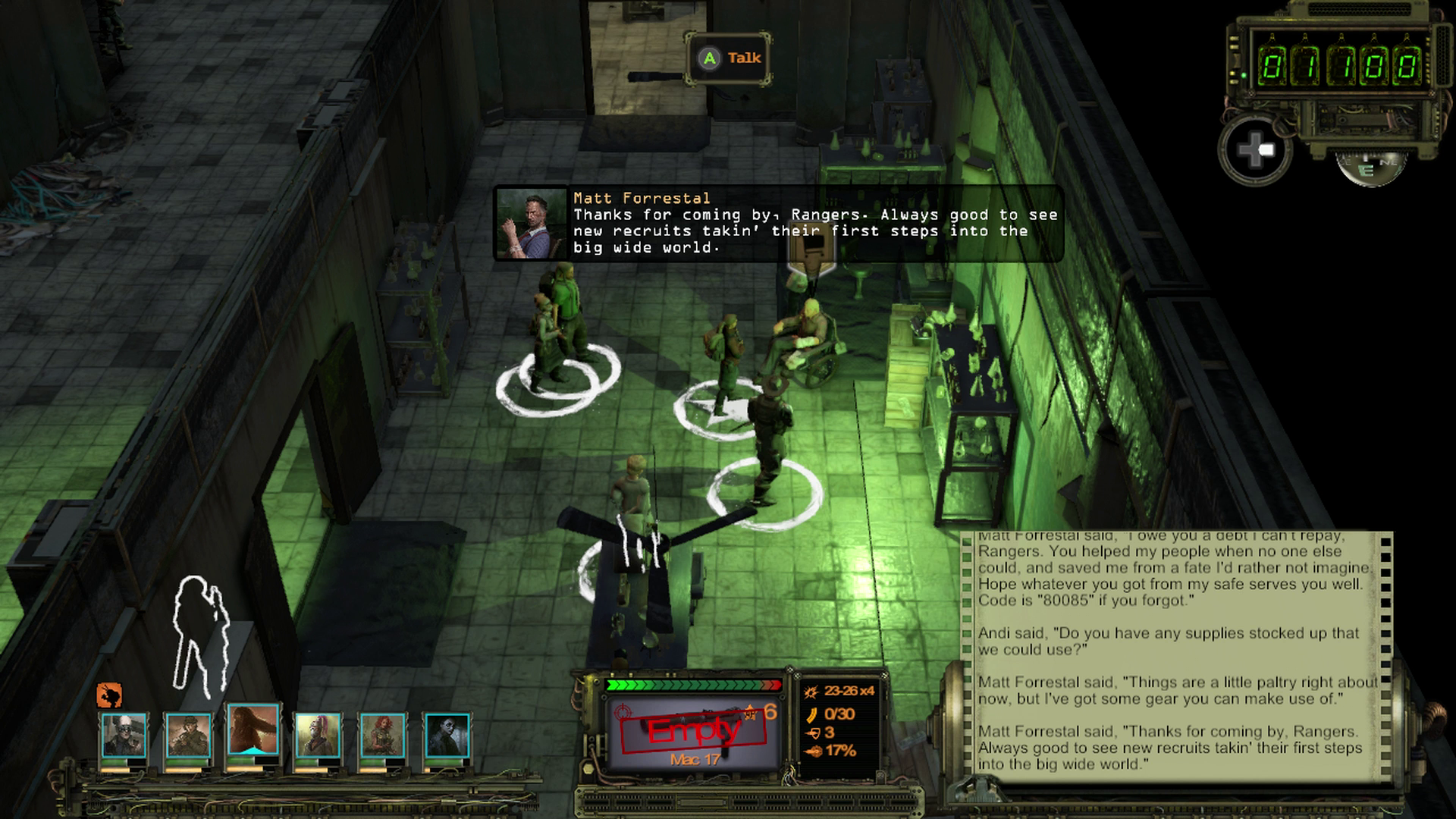
Fallout 4 is my most anticipated game of 2015, and indeed, perhaps my most anticipated game since Fallout 3. It's with that in mind I jumped into Wasteland 2, wondering whether a 'Kickstarter project' could hope to scratch that post-apocalyptic itch I have for Bethesda's multi-million dollar sure-fire blockbuster. I have to say, Wasteland 2 didn't just exceed my expectations, it's become a contender for my personal Xbox One game of the year.
Get the Windows Central Newsletter
All the latest news, reviews, and guides for Windows and Xbox diehards.
Presentation & Story
As mentioned earlier, you play as a team of four rookie Desert Rangers, a rudimentary law and order force in the post-apocalyptic Arizona wastes. The game kicks off with a live retro-style cut-scene, which serves to set the tone for InXile's Mad Max-esque world. One of the Desert Rangers' biggest heroes - Ace - has been killed, and you're in attendance at his funeral. The Desert Rangers' leader, General Vargas, requests that your squad completes Ace's mission and hunt clues which could explain how he died.
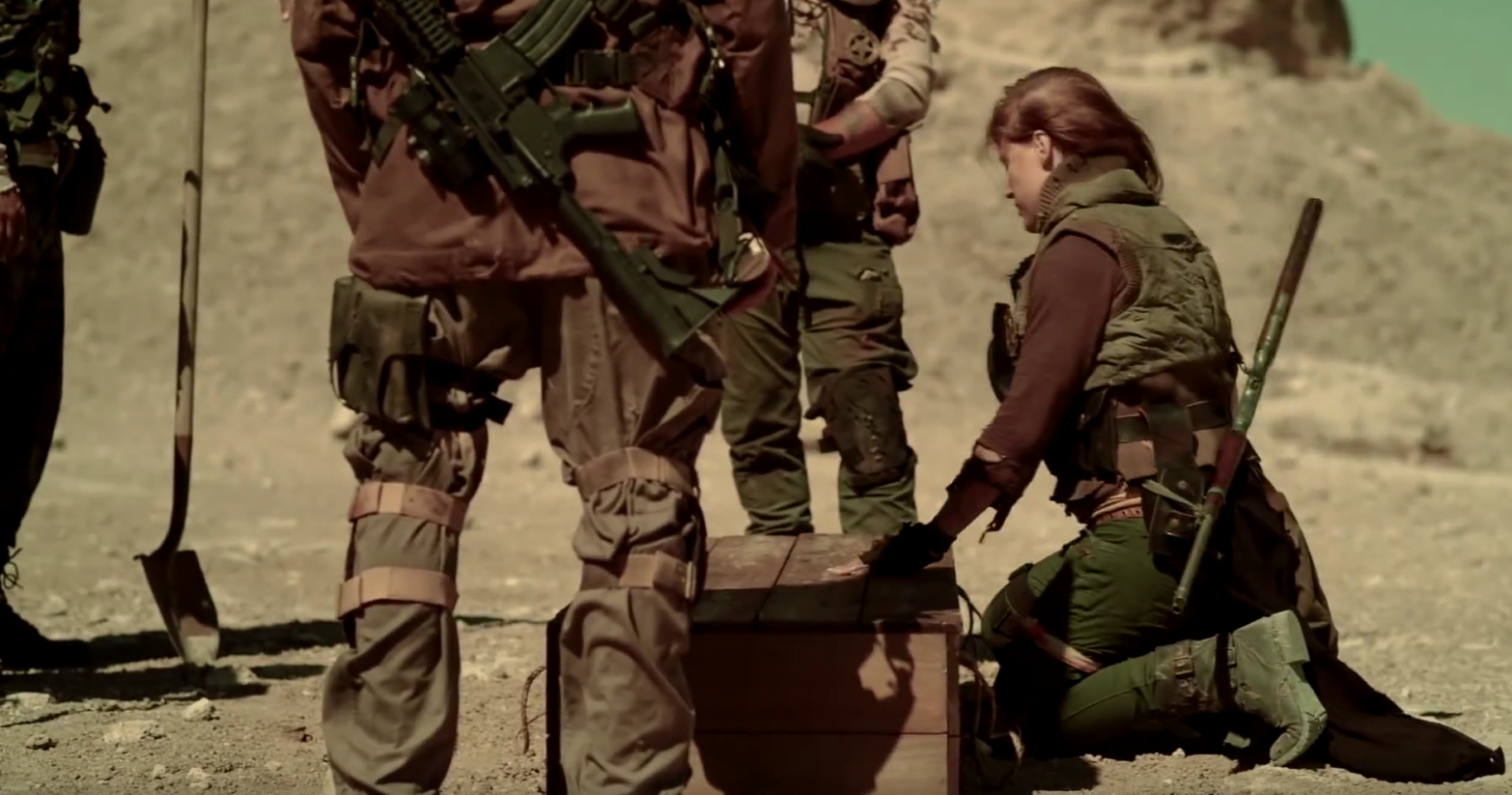
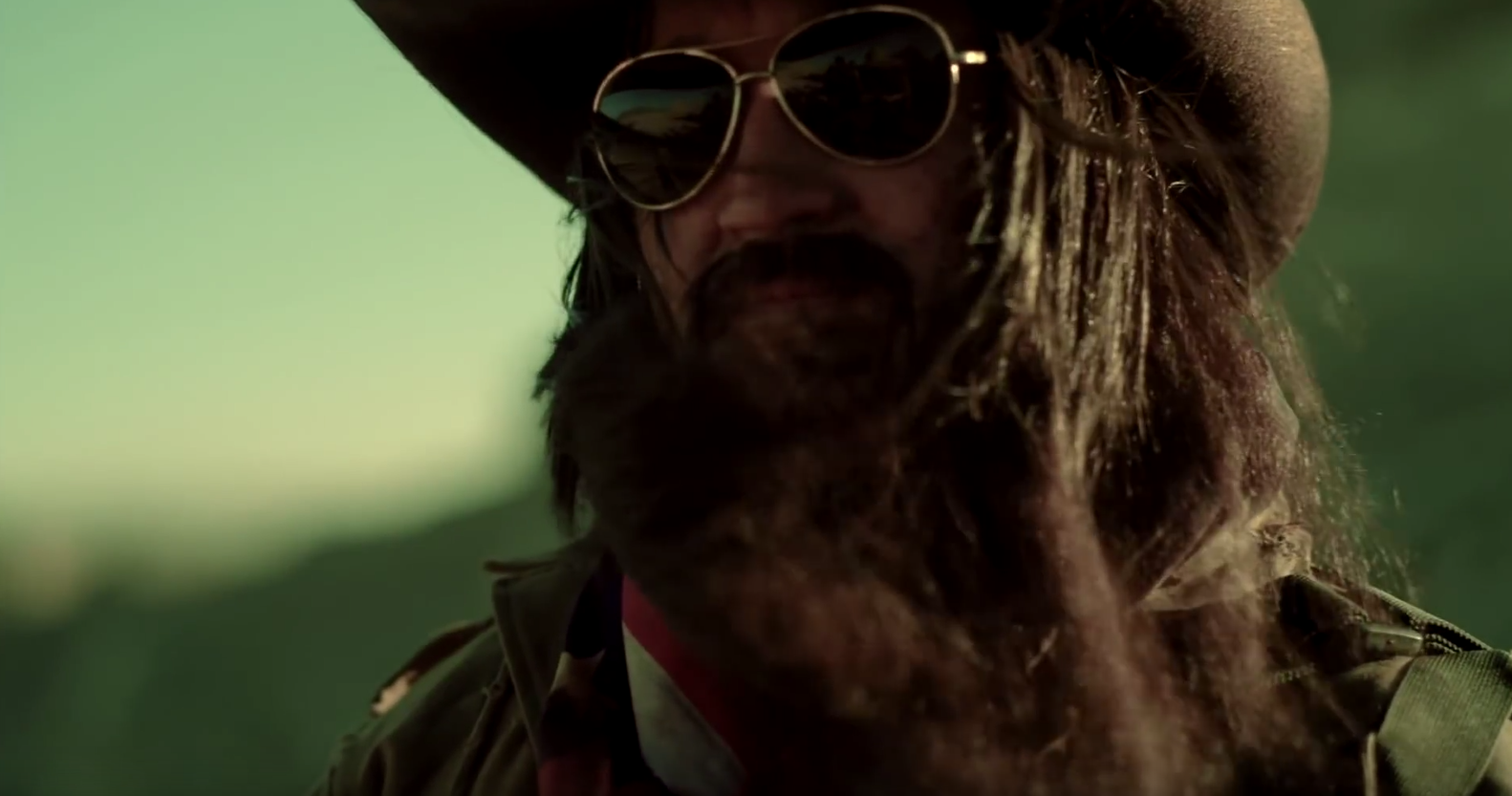
Some of the frills you might expect of a 'Triple A' budgeted game simply aren't present. Only portions of the dialogue are voiced, and even when they are voiced, the quality of the acting can be a mixed bag. However, the design of the game's world, and the details poured into it are nothing short of excellent - wholly what you'd expect of a quality RPG. You'll stumble upon gigantic mutated fruit and veg, dilapidated highways, ruined cities and all manner of inter-dependent factions. Cultists, crazed robots, nihilistic miilltias, traders, mutants, freaks, raiders are all represented. On your mission to solve the wasteland's problems you'll meet and greet them all, and maybe kill a fair few of them.
The story is quite gripping if you can get over the patchy acting. As you wander around the wasteland, the log will deliver detailed descriptions of what the high camera view can't display, often with comedic leanings. The log also offers descriptions of the game's combat in homage to the classic text-based RPGs of yesteryear. As with other high-profile modern RPGs, your actions have consequences, but Wasteland 2 projects some old school concepts upon this philosophy.

You can ditch the game's main quests and become a rogue, killing all the game's NPCs at will. There are no damage-immune characters to prevent the plot from falling apart, but beware the consequences. Certain quests might become unplayable should you kill the wrong NPC. Indeed, the Rangers might send a team to hunt you down if you commit too many crimes. Conversely, if you get on the good side of the right people, it could benefit you greatly.
You can ditch the game's main quests and become a rogue, killing all the game's NPCs at will.
To get the most out of the game, it's probably best to follow its core premise - that you're a Desert Ranger following orders. Just how you'll follow those orders remains firmly up to you. Most of the game's choices avoid "good vs. evil" archetypes, instead offering a spectrum of grey areas which players will interpret differently. Near the start of the game, you're subjected to separate distress calls from two nearby settlements - choosing one with seal the fate of the other. The game is fraught with similar instances of meaningful, sometimes difficult decisions - difficult because InXile do a great job of creating emotional attachments to the game's characters.
On general presentation, Wasteland 2 enjoys a high concentration in detail with atmospheric audio and musical treatment. However, the models and texturing are a little on the low end. Occasionally the game freezes up as well, which is a tad annoying, although thankfully not game breaking due to its turn-based nature.
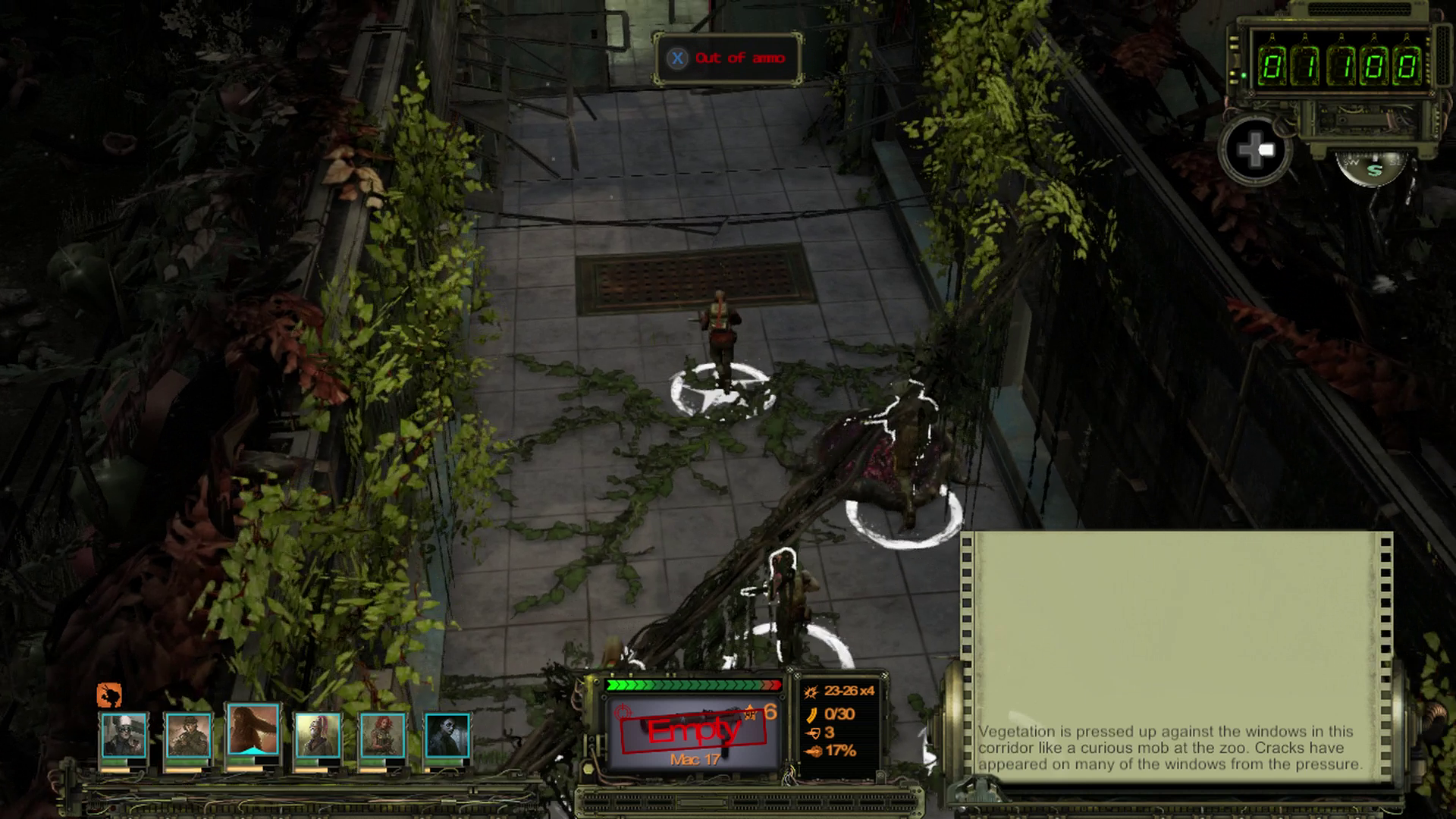
Wasteland 2 is a little rough around the edges, but InXile prove that you don't need a mammoth budget to produce a truly great video game. Wasteland 2: Director's Cut delivers big on its core promise - immersive, open-ended and tactical RPG gameplay.
Gameplay
Wasteland 2 pledged in its Kickstarter to recapture strategic turn-based play, all while adding some modern flare. As far as the Director's Cut goes, I'm of the opinion that they not only delivered, but went above and beyond.
Your stats play a primary role in Wasteland 2's combat. You'll form a squad of four characters to begin with, using pre-made characters or new ones designed entirely by yourself. As far as visual customization is concerned, there isn't a great deal of choice, but the game offers an array of Western-style garb all the way to Mad Max punk chic. Once you've chosen your appearance, you can modify your stats and skills. Stats have a direct impact on every aspect of gameplay, so creating a balanced squad is quite essential - but not required.
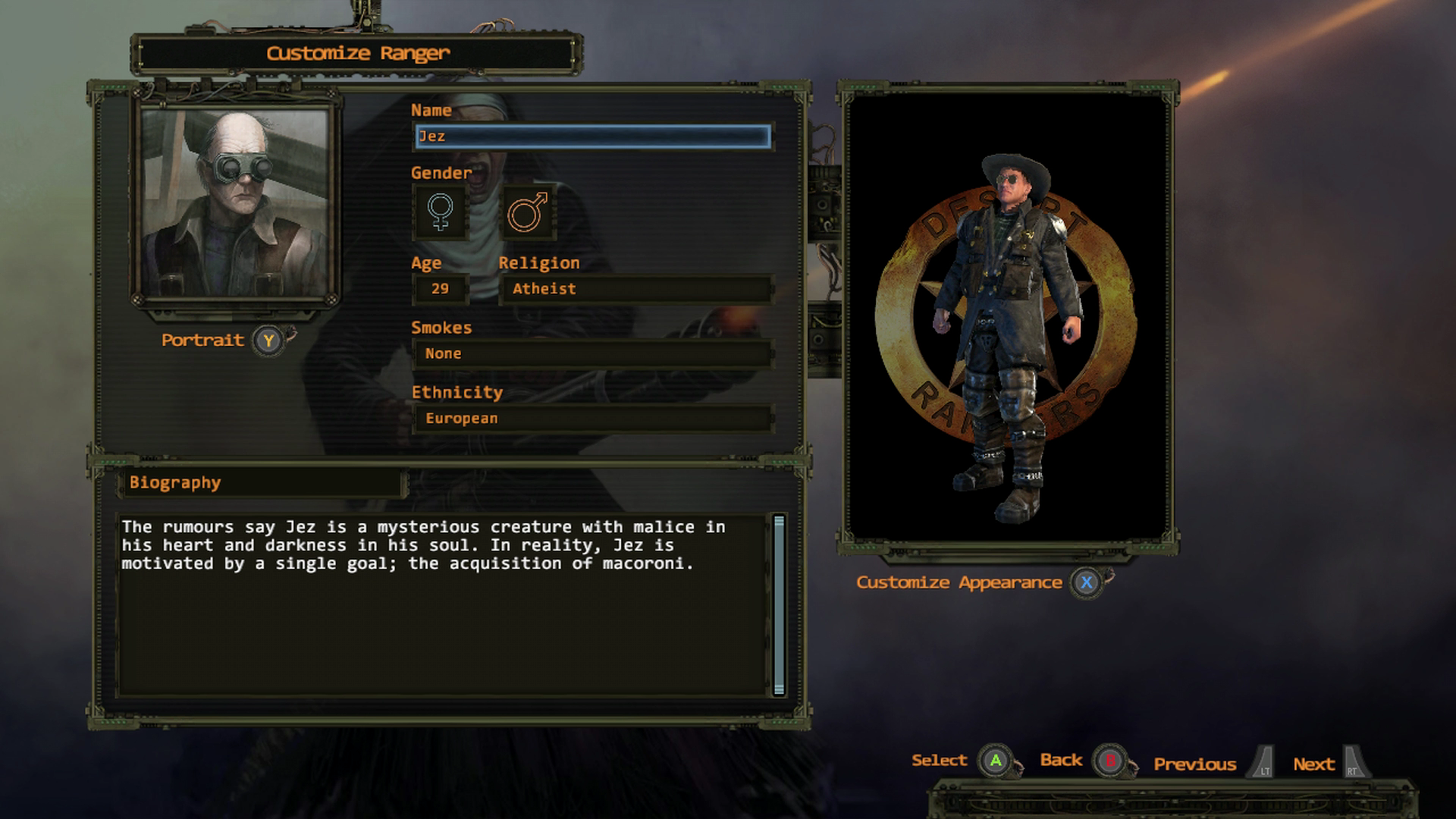
The game will inform you how stats affect your character's abilities. For example, higher Coordination lowers the chance for your attacks to miss, and allows you move further on the battlefield; higher Intellect gives you more skill points to spend when you level up. Skill points are allocated to the game's various attack types and abilities, including handguns, sub-machine guns, assault rifles, sniper rifles, melee weapons and so on. They can also be used on various environmental abilities like lock picking, and other skills that include dialogue persuasion and surgical healing. You're really going to need the latter, because death in Wasteland 2 truly means death. While squad members can be revived after being knocked out in combat, if your favourite sniper gets sawed in half by an angry robot, the only way to save him is to reload a save file.
The combat in Wasteland 2 is utterly addictive.
Combat encounters take place using Actions Points, determined by your stats, equipment, and other modifiers. When entering combat, a grid appears on the map. The combatants take turns (determined by stats), in similar fashion to games like XCOM and Massive Chalice. When its your turn you'll spend Action Points to move around the combat grid, attack, and use other abilities. The grid informs you how far you can move while still being able to make an attack, and allows you to carry over some Action Points if you have some unspent at the end of your turn.
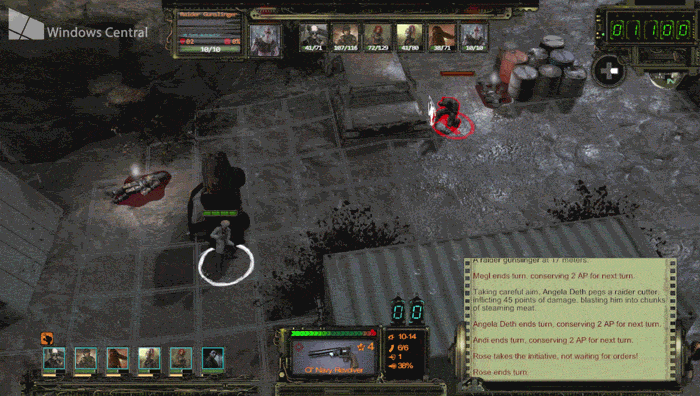
The amount of available Action Points are determined by various factors, including stats, status effects and weapon type. Critical hits can cause enemy character models to explode into satisfying, Fallout-like cascades of gore, giving the game's various offensive abilities a sense of impact without being attached to FPS-style trigger pulls.
The combat in Wasteland 2 is utterly addictive, and is far deeper than I'm able to explain without keeping you here for an hour or two. You'll blast, hack, or talk your way around a ridiculous amount of unique enemy types, using over 150 weapons and dozens of skills. However, the translation from PC to console hasn't been entirely smooth.
The cursor snaps to grid spaces in combat and often gets stuck, making action selections a chore. Additionally, abilities typically assigned to a keyboard on PC feature in radial menus and shoulder button cycling on console, both of which are fairly cumbersome. At one point, I found myself unable to click on a quest object due to the surrounding clutter distracting the cursor. As a last resort, I ended up using a grenade to clear the cursor harassing objects. Thankfully the awkward controls are saved by the fact the game is turn-based, fast reactions are never required - but it could certainly be a lot more refined in this area.
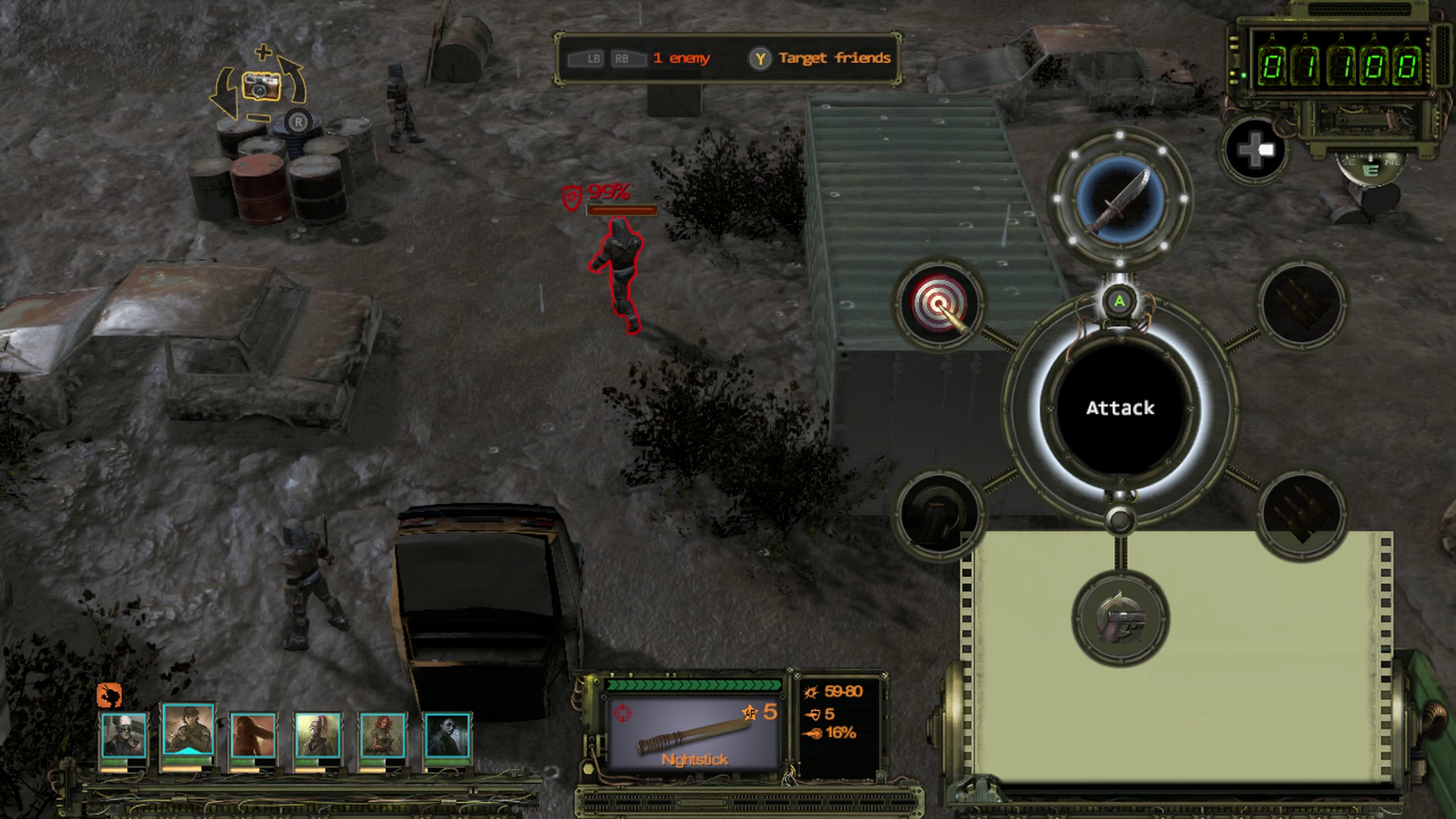

When you're not battling raiders or mutants, you're exploring the wasteland, bartering for supplies and engaging in quests. Wasteland 2's locations are spread out across a 3D over-world, which is another welcome throwback to RPG aspects long neglected. As a result, traversing between missions feels like a grand expedition, hunting for oases to keep hydrated and plunging through radiation clouds on the hunt for settlements. There are no arrows pointing you to the next quest objective, you simply have to use what you've learned from NPCs and explore, trusty compass in hand.
Wasteland 2 carries the torch of its ancestors into a generation that sometimes forgets what makes RPG gameplay so great. Its turn-based nature may not appeal to everyone, but if you're looking for true RPG depth, Wasteland 2: Director's Cut has you more than covered.
Conclusion
For me, great RPGs have four staple pillars: expeditionary exploration, challenging, tactical combat, rewarding character progression and an engaging, divergent story. Wasteland 2: Director's Cut has them all in abundance.
InXile funded Wasteland 2 via Kickstarter with a relatively small budget, and it does show. The UI is dated, the controls are awkward, the animations are wonky and the graphics are on the low end, but none of it harms the experience in any major way. InXile focussed their resources on what was most important, that being the game's RPG systems, combat, writing and depth. While the big-budget behemoths are chasing Bethesda's open-world crown for sheer vastness, InXile managed to deliver that sense of scale with comparatively tiny financing - a feat that I consider pretty laudable.
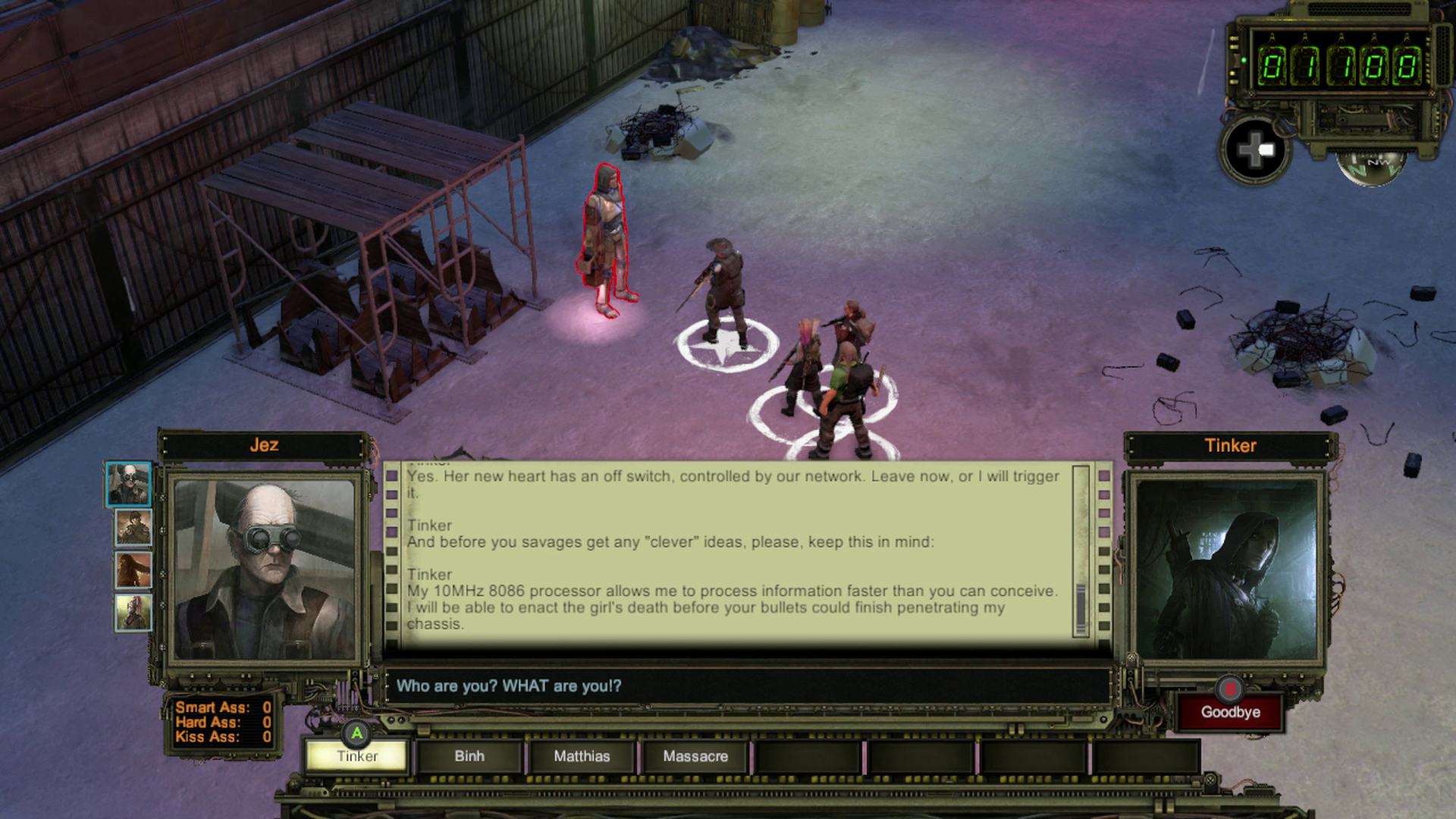
You're looking at around 40 hours worth of gameplay if you're rushing the main mission alone. When you throw in Wasteland 2's arsenal of side missions you're looking at well over 70. However, the freedom you're afforded when it comes to gameplay styles and story-based choices, you could run through the game a second time and experience something entirely different. Wasteland 2 has incredible replayability, and a lot of the achievements are tied to undertaking different paths within the game's sizable world.
Pros:
- Addictive, challenging, rewarding
- Stark consequences for your actions
- Tons of content rife with replayability
Cons:
- Dated visuals
- Awkward controls
I came in to Wasteland 2: Director's Cut ignorant of the CRPGs of yesteryear, and it's made me lament what I've missed growing up as a console gamer. The spoiled Triple A consumer in me wishes Wasteland 2: Director's Cut had shinier presentation, but I wouldn't trade it for the depth InXile have offered. I was hoping for a mere post-apocalyptic stopgap to tide me over while I wait for Fallout 4, InXile slapped me hard for my underestimation. Wasteland 2: Director's Cut sits among the best RPGs on Xbox One today.

Jez Corden is the Executive Editor at Windows Central, focusing primarily on all things Xbox and gaming. Jez is known for breaking exclusive news and analysis as relates to the Microsoft ecosystem while being powered by tea. Follow on Twitter (X) and Threads, and listen to his XB2 Podcast, all about, you guessed it, Xbox!
